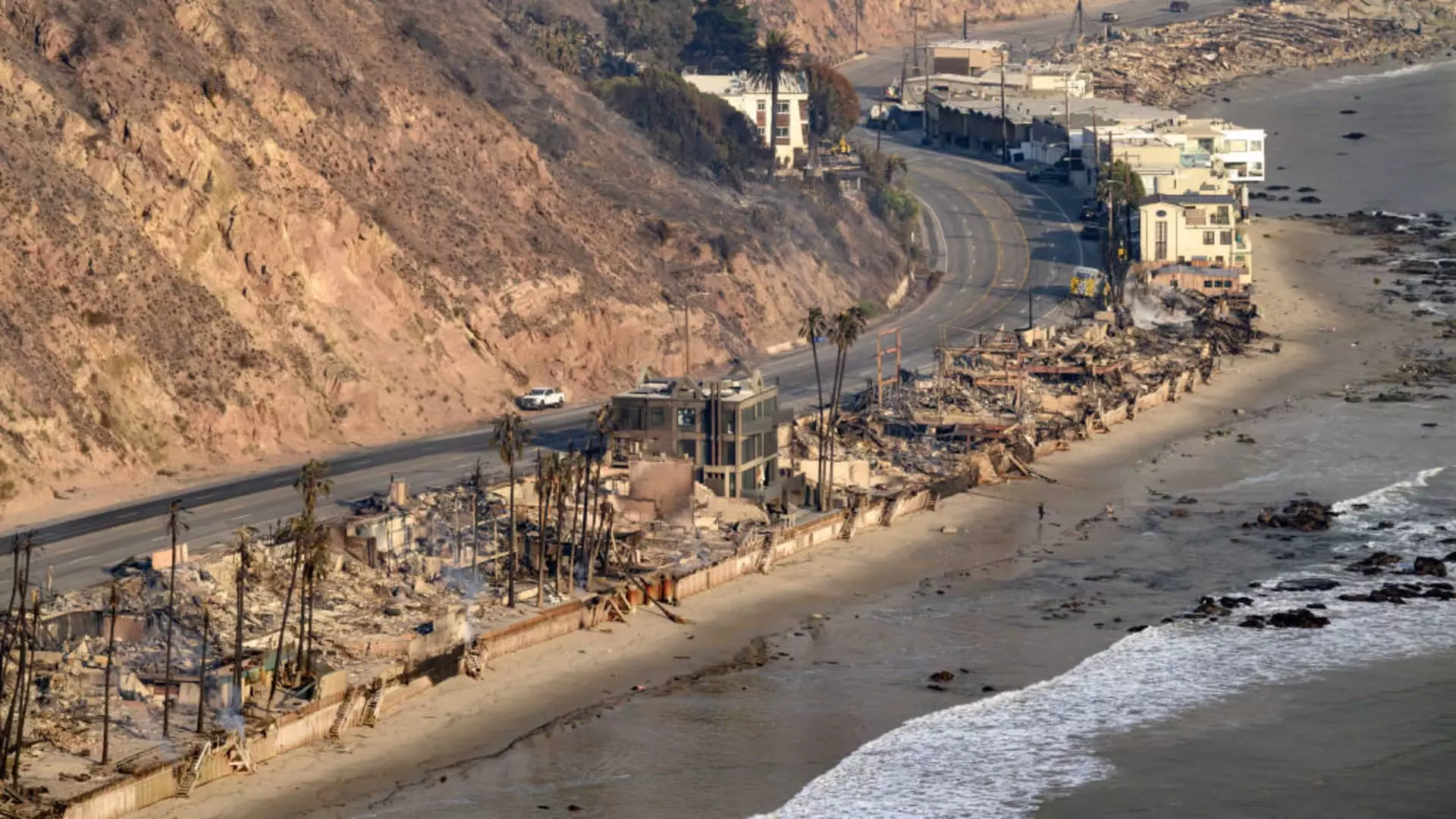The ongoing wildfires in Los Angeles have forced airlines to implement emergency measures, demonstrating the resilience of the aviation industry amid catastrophic circumstances. As massive blazes engulf the region, major carriers—including American Airlines, United Airlines, Southwest Airlines, and JetBlue Airways—have proactively extended travel waivers for passengers scheduled to fly into the affected areas. This decision comes as the city grapples with extensive power outages, a debilitating water shortage, and the destruction of over 10,000 homes and various structures. The swift action taken by these airlines highlights the challenges of the current environment, as they adapt to a fluid and precarious situation.
As of recent reports, airports within the Los Angeles region were reportedly still functioning normally, according to data from the flight-tracking platform FlightAware. However, the lingering threat of wildfires continues to cast a shadow over everyday operations and the lives of the residents. Fires have left towns under evacuation orders, particularly in the devastated Pacific Palisades area, where authorities have urged residents to boil water or rely on bottled supplies. It is evident that the community is confronting a dual crisis—not only battling the wildfires but also managing the aftermath of their destruction.
In response to the chaos, airlines are granting travelers unprecedented flexibility. American Airlines has announced that passengers flying to or from Hollywood Burbank Airport, Los Angeles International Airport, Ontario International Airport, and John Wayne Airport can rebook flights without incurring change fees or fare differences. This extension of travel flexibility serves as a crucial lifeline for travelers who may be stranded or unable to reach their intended destinations due to the hazardous conditions. They can rebook their flights as far in advance as January 20, thereby potentially alleviating confusion and providing peace of mind.
Similarly, Southwest Airlines has communicated that wildfires may disrupt services to these key airports, allowing customers to adjust their itineraries without incurring additional charges. Moreover, Southwest offers alternatives by permitting reroutes to other California cities such as Palm Springs, Santa Barbara, and San Diego, which encourages travelers to maintain their plans without having to abandon their travel entirely.
Subject to the evolution of the situation, airlines are also facing declining sales in travel to Los Angeles. Speaking on an earnings call, Delta Air Lines’ President Glen Hauenstein disclosed that flight sales to this pivotal hub have dwindled during the wildfire crisis, though cancellations have not surged. The implications of such sales momentum must be evaluated in the context of broader market trends; while the immediate impact appears limited for the current financial quarter, the protracted fallout remains to be seen.
Hauenstein is optimistic, noting that historical patterns suggest a surge in travel demand frequently follows natural disasters as communities begin rebuilding efforts. Despite the unfortunate circumstances, the airline industry maintains a long-term perspective, acknowledging its previous encounters with hurricanes and floods. The resilience shown by airlines through proactive measures demonstrates their ability to adapt and respond to crises while still providing essential connectivity.
Looking Ahead: Recovery and Rebuilding
As Los Angeles moves forward in the aftermath of this disaster, the focus will inevitably shift toward recovery efforts. Local municipalities, utilities, and emergency services are likely to coordinate their actions, while the role of airlines will be pivotal in reinstating normalcy. The short-term challenges posed by wildfires could be met with a renewed commitment from the airline industry to support the rebuilding of the local economy.
Moreover, this situation raises poignant questions regarding infrastructure resilience in the face of climate change. As the frequency and intensity of such disasters grow, both airlines and local governments must strategize around better preparedness, response frameworks, and community support systems. In navigating this critical juncture, the lessons learned could influence future practices and help mitigate impacts of similar crises in the years to come.
As the wildfires in Los Angeles reveal their devastating effects, the adaptability of airlines illustrates both a response to immediate needs and a long-term perspective toward recovery. The interplay of crisis management and future aspirations presents an essential narrative in understanding the evolving dynamics of travel in a world increasingly affected by natural disasters.


Leave a Reply